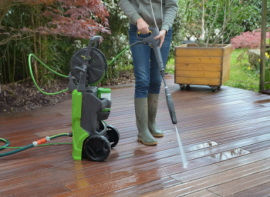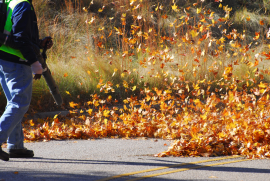- Kenmore refrigerator water filters
- Whirlpool refrigerator water filters
- Samsung refrigerator water filters
- GE refrigerator water filters
- LG refrigerator water filters
- Frigidaire refrigerator water filters
- KitchenAid refrigerator water filters
- Maytag refrigerator water filters
- Kenmore Elite refrigerator water filters
- Estate refrigerator water filters
- GE Profile refrigerator water filters
- Amana refrigerator water filters
- Bosch refrigerator water filters
- Dacor refrigerator water filters
- Electrolux refrigerator water filters
Leaf blower common questions


These common questions about leaf blowers are the ones our experts hear the most often from our customers. You might also find the help you need by checking the common symptoms and solutions for leaf blowers. When you’re ready to make a repair, search your model number to find replacement parts. Sears PartsDirect has the part you need, no matter where you bought your leaf blower.
Why won't my leaf blower start?
Stale fuel is the most common cause when a leaf blower doesn’t start; that’s why it’s recommended that you use up all the fuel before storing the leaf blower at the end of the season. Empty the gas tank and fill it with fresh fuel or 2-cycle gasoline/oil mix. If the leaf blower still won’t start, the engine might have a clogged carburetor, failed ignition system, or lack of compression.
Why won't my engine idle properly?
If your leaf blower is idling poorly, the idle speed is likely set too low or too high. You can adjust the idle speed on some leaf blower models by adjusting the idle set screw on the carburetor. Refer to your owner's manual for instructions on adjusting the idle set screw on your leaf blower.
Why won't the engine accelerate?
The engine needs fuel and air mixed in the right proportions. A dirty air filter or clogged fuel filter can restrict air and fuel to the carburetor. Other possible causes include a cracked fuel supply line, low cylinder compression, dirty carburetor, or carbon buildup.
Why does the engine smoke excessively?
If the leaf blower smokes a lot, check the fuel mixture. Too much 2-cycle oil in the gasoline mixture causes excessive smoke. Most 2-cycle leaf blower engines use a 40:1 or 50:1 gasoline to oil mixture.
A dirty air filter can cause the engine in a leaf blower to smoke excessively. Clean or replace the air filter if it’s dirty.
Check the choke position on the carburetor. If the choke is partially closed, the engine can smoke too much.
Clean and adjust the carburetor if necessary to eliminate excessive smoke.
Why is the engine running hot?
An incorrect fuel mixture causes the engine in a leaf blower to overheat. Most 2-cycle leaf blower engines use a 40:1 or 50:1 gasoline to oil mixture. Drain the fuel tank and fill it with the proper fuel mix if necessary.
The wrong type of spark plug can also cause the leaf blower engine to run hot. If you recently replaced the spark plug, make sure that you installed the correct type for your model of leaf blower.
An improperly adjusted carburetor can cause the engine in a leaf blower to overheat. Adjust the carburetor according to the guidelines in your owner’s manual if necessary to prevent the engine from overheating.
Can I use E85 fuel in my leaf blower?
Most leaf blower engines cannot use E85 fuel, which contains 85% ethanol and 15% gasoline. Many leaf blowers can only use unleaded gasoline with up to 10% ethyl alcohol (E10). Check your owner’s manual for fuel specifications.
How should I store my leaf blower?
If you plan to store your leaf blower for 30 days or more, empty the fuel system by draining the gas tank into an approved container. Then start the engine and let it run until the fuel lines and carburetor are empty. At the beginning of the next season, use only fresh fuel that has the gasoline-to-oil ratio specified in the owner’s manual.
What mix of gasoline and oil should I use in my leaf blower?
Check your owner’s manual for the proper ratio of gasoline to oil needed for a 2-cycle leaf blower. Most models require a 40:1 ratio. To achieve that mix, add a 3.2 oz. bottle of 2-cycle oil to each gallon of gasoline.
How often should I clean the air filter on my leaf blower?
Clean the leaf blower's air filter after every 5 hours of use. Clean a foam air filter by washing it in warm, soapy water. Rinse the foam air filter with clean water and let it dry completely before reinstalling it on the engine. If the air filter is damaged, replace it.
Why won't my leaf blower blow any air?
If the leaf blower doesn’t blow air, check the fan blade. A loose or broken fan blade won’t move air through the blower tube. Reattach the fan blade to the engine crankshaft if disconnected. Replace the fan blade if damaged.
Was this information helpful?
Symptoms for gas leaf blowers
Choose a symptom to see related leaf blower repairs.
Main causes: cracked fuel lines, leaky carburetor seals, damaged fuel tank cap, cracked fuel tank…
Main causes: damaged fan blade, engine needs a tune up, dirty carburetor…
Main causes: stale fuel, dirty air filter, bad spark plug, cracked fuel lines, clogged carburetor…
Main causes: mixing too much 2-cycle oil with the gas, dirty air filter, clogged carburetor, engine needs tune up…
Main causes: bad gas, clogged air filter, cracked fuel lines, clogged fuel filter, dirty carburetor, bad spark plug, wor…
Repair guides for gas leaf blowers
These step-by-step repair guides will help you safely fix what’s broken on your leaf blower.

How to replace a leaf blower carburetor
The carburetor could be the problem If the leaf blower engine won't start even though there's fuel in the tank. Follow t…
Repair difficulty
Time required
15 minutes or less

How to replace leaf blower fuel lines
Leaf blower fuel lines deteriorate with time and eventually can split or crack. You can remove and replace them yourself…
Repair difficulty
Time required
60 minutes or less

How to rebuild a leaf blower carburetor
If the leaf blower engine won't start even though there's fuel in the tank, the carburetor could be the problem. Follow …
Repair difficulty
Time required
60 minutes or less
Articles and videos for gas leaf blowers
Use the advice and tips in these articles to get the most out of your leaf blower.

Learn about the top 10 must-have electric lawn & garden tools for 2023…

Get answers to frequently asked questions about Sears and Sears PartsDirect.…

Follow this advice for caring for your leaf blower.…